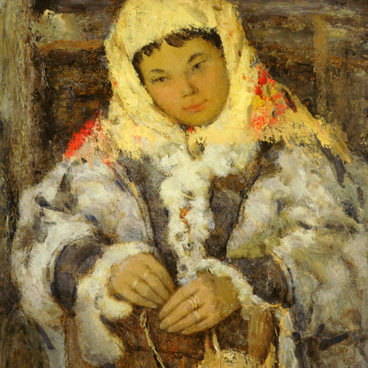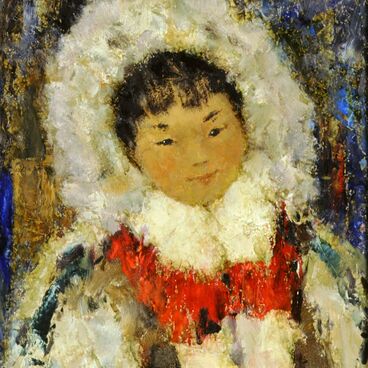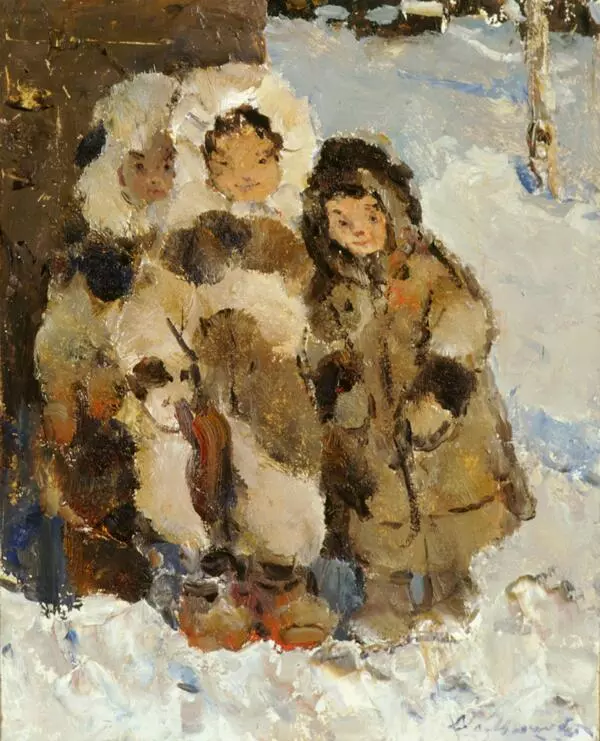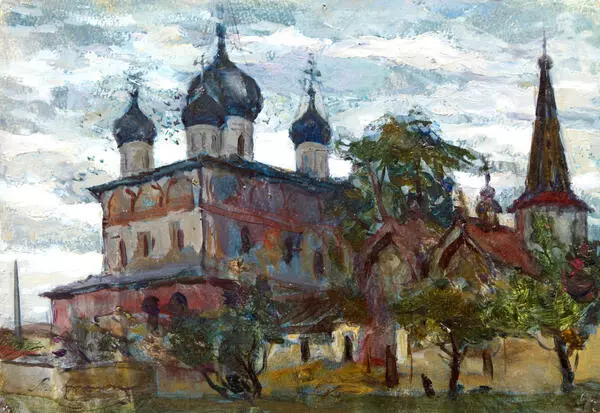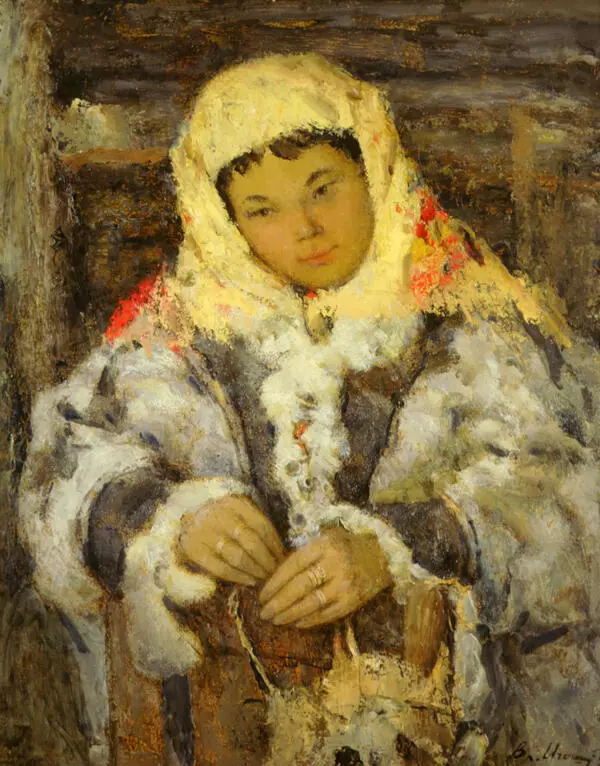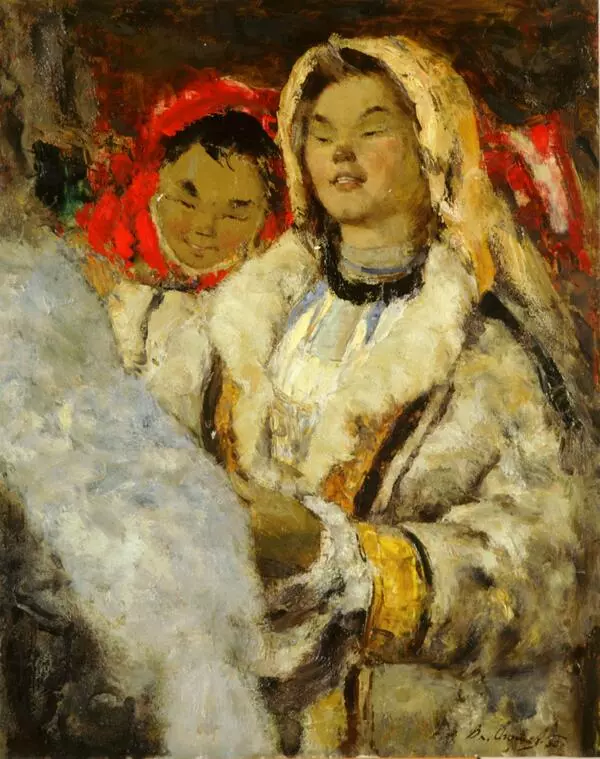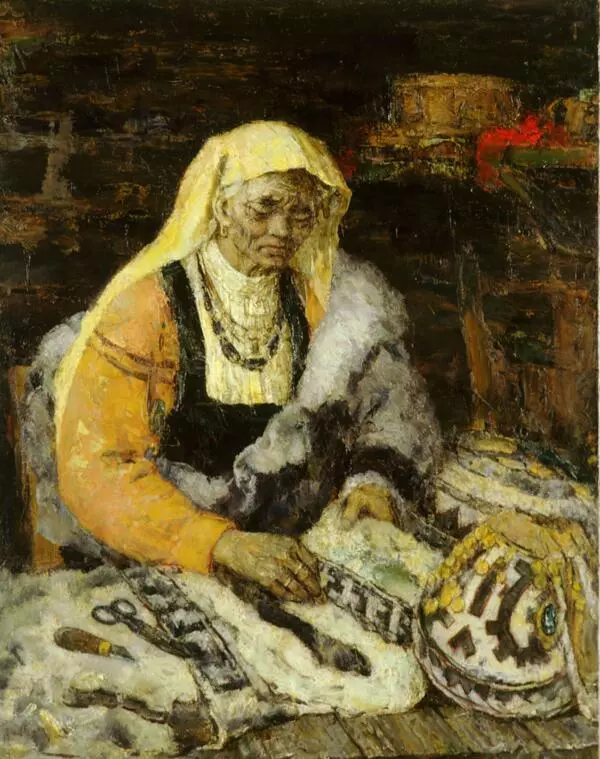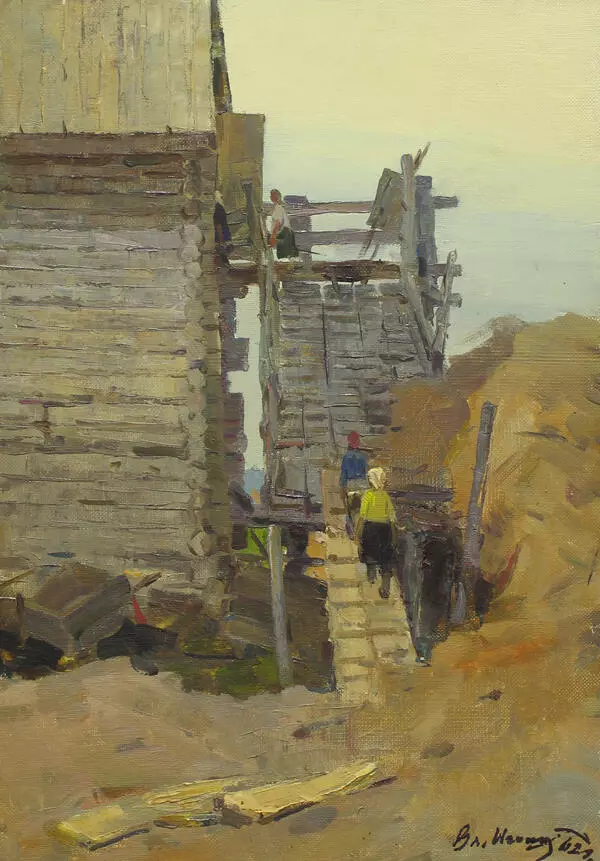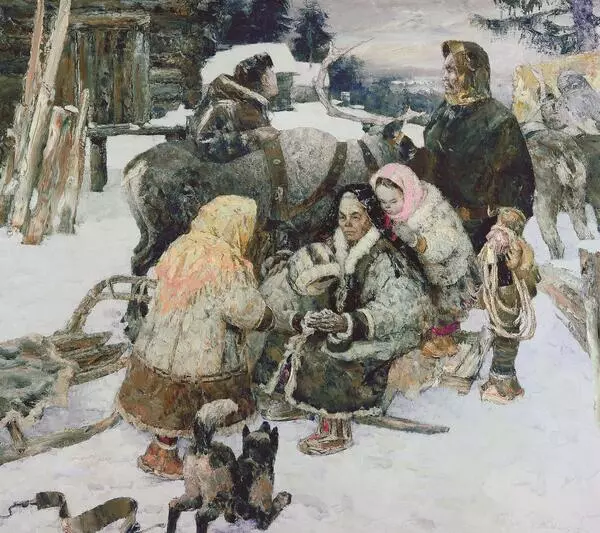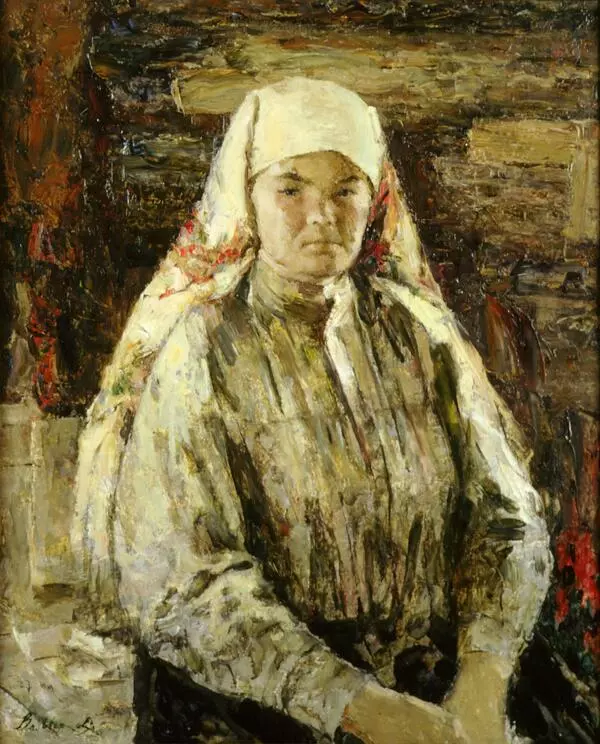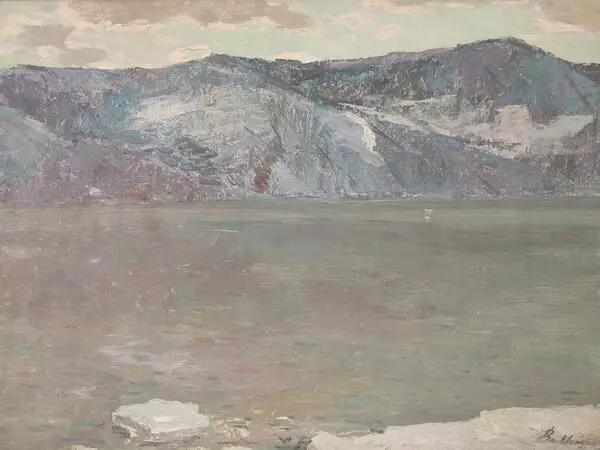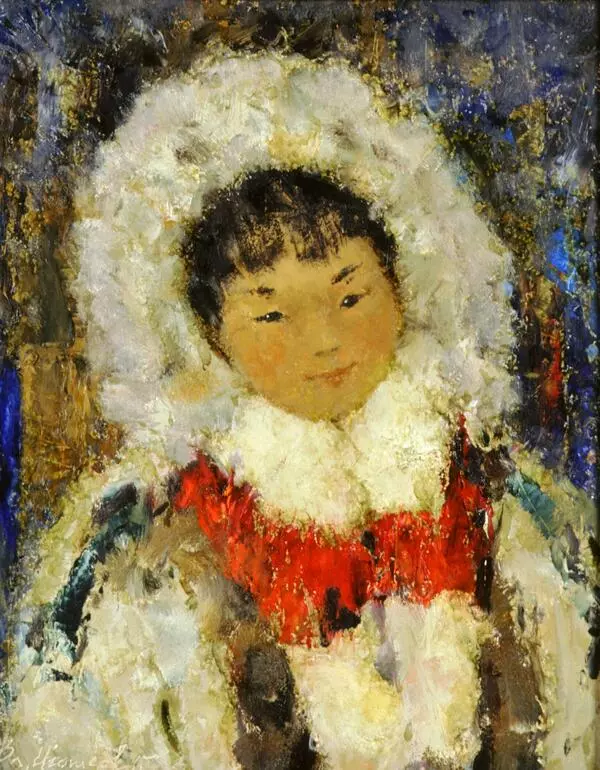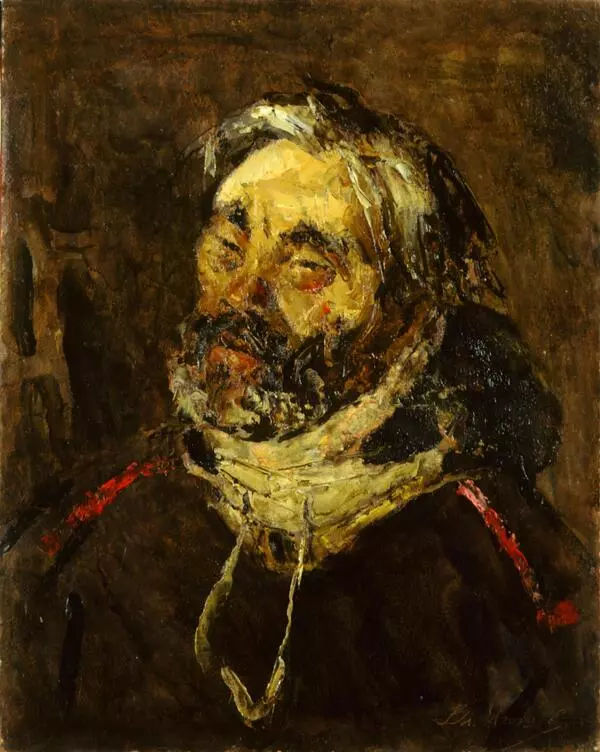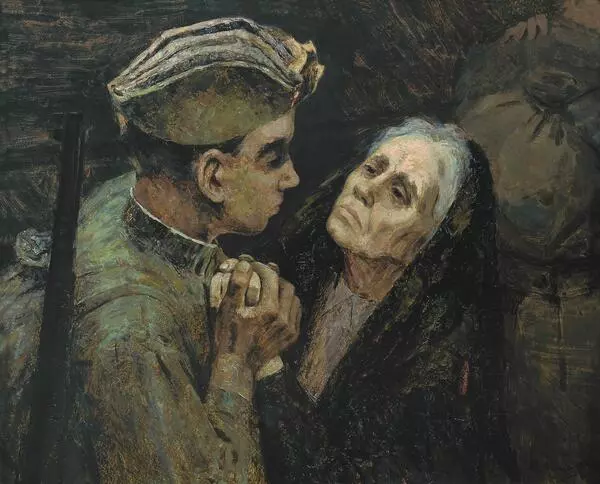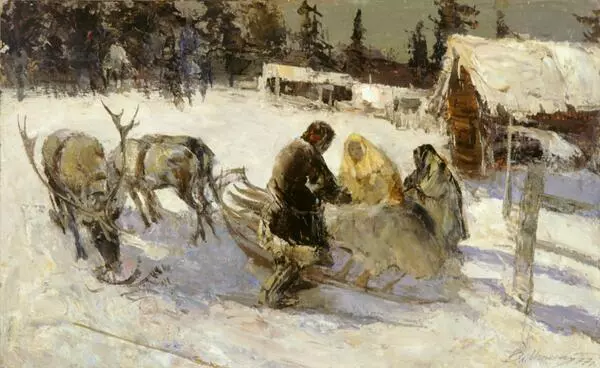Vladimir Igoshev entitled his series of works dedicated to the extinguishing villages 500 Hiroshimas. A small horizontal sketch shows the hopelessness of the country life, that was destroyed in the Soviet time. There are broke-backed buildings, a truck moving along the muddy rough track, a silhouette of an old woman with a crook.
All of the above symbolizes the physical state of a painter, who came from a loving and supportive peasant family. In recent years many of the Russian settlements ceased to exist. It was caused by various reasons. Some villages were demolished as there were not enough people living there, some were replaced with the large constructions, some were deserted.
The painter recalled: ‘In my opinion, Khanty-Mansi Autonomour Okrug went through all “joys” of civilization, both beneficial and malign, to the full extent. The exotic area paid for Surgut and Nizhnevartovsk, for the infamous petrodollars, which provided Moscow with some cheap lunch meat. Mansi are the children of nature, and it was nature that was destroyed carelessly and cynically. The hunting and fishing grounds were ruined. In 1960 I already got to taste white salmon smelling of kerosene. Reindeer breeding was in decay, as off-the-road vehicles and bulldozers eliminated reindeer lichen all around. In the soil destroyed by tracked vehicles reindeer lichen only restores in one hundred years! And there’s nobody left to take care of the reindeer: all the youngsters left to become oil workers. The industrial cities developed while the native villages decayed. Is it possible to stay calm watching all that? And even though the whole environment of the time and our authorities wanted us, painters, to brighten up the reality, and the exhibitions mostly included the lightest, the most optimistic art, yet painting, just like the music, gives possibilities to express the most intimate thoughts.’
Vladimir Igoshev got to visit Japan during the solo exhibition of his works in Tokyo. During his journey he visited Hiroshima, a city that had gone through the greatest tragedy all mankind knows and remembers. When he visited the Peace Memorial Park, when he looked at the memorials of the victims, when he painted the destroyed and yet surviving Atomic Bomb Dome, he recalled the Battle of Stalingrad and Pavlov’s House, the unforgettable monuments and artifacts of one of the main battles in the history of the Great Patriotic War.
All of the above symbolizes the physical state of a painter, who came from a loving and supportive peasant family. In recent years many of the Russian settlements ceased to exist. It was caused by various reasons. Some villages were demolished as there were not enough people living there, some were replaced with the large constructions, some were deserted.
The painter recalled: ‘In my opinion, Khanty-Mansi Autonomour Okrug went through all “joys” of civilization, both beneficial and malign, to the full extent. The exotic area paid for Surgut and Nizhnevartovsk, for the infamous petrodollars, which provided Moscow with some cheap lunch meat. Mansi are the children of nature, and it was nature that was destroyed carelessly and cynically. The hunting and fishing grounds were ruined. In 1960 I already got to taste white salmon smelling of kerosene. Reindeer breeding was in decay, as off-the-road vehicles and bulldozers eliminated reindeer lichen all around. In the soil destroyed by tracked vehicles reindeer lichen only restores in one hundred years! And there’s nobody left to take care of the reindeer: all the youngsters left to become oil workers. The industrial cities developed while the native villages decayed. Is it possible to stay calm watching all that? And even though the whole environment of the time and our authorities wanted us, painters, to brighten up the reality, and the exhibitions mostly included the lightest, the most optimistic art, yet painting, just like the music, gives possibilities to express the most intimate thoughts.’
Vladimir Igoshev got to visit Japan during the solo exhibition of his works in Tokyo. During his journey he visited Hiroshima, a city that had gone through the greatest tragedy all mankind knows and remembers. When he visited the Peace Memorial Park, when he looked at the memorials of the victims, when he painted the destroyed and yet surviving Atomic Bomb Dome, he recalled the Battle of Stalingrad and Pavlov’s House, the unforgettable monuments and artifacts of one of the main battles in the history of the Great Patriotic War.


